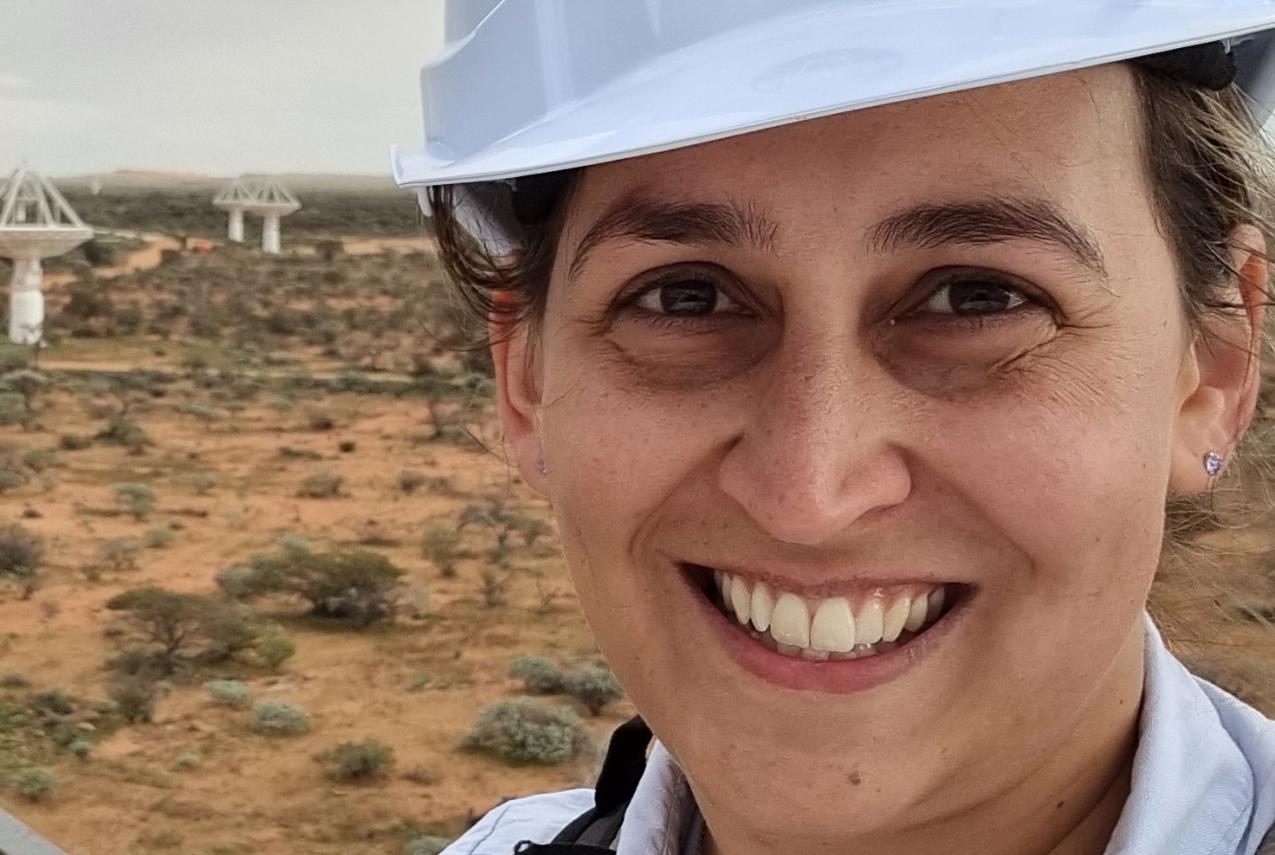Your last VR film was The Antarctica Experience, now you’ve turned your attention to radio telescopes. Why?
After The Antarctica Experience it made complete sense to turn our sights to another incredible experience that few will ever get the opportunity to do for themselves, and that meant the edge of the Universe!
Who doesn’t want to go to space? And it’s a question that’s often asked, “Are we alone in the Universe?”
I love the line one of our incredible contributors says in the film – “One thing you can’t do in a space ship is to explore beyond the Milky Way, but with these telescopes we can”.
To really explore the big science questions and see further than we’ve ever been able to before requires the world’s largest radio telescope – the SKA.
It’s not every day you get to communicate one of the largest ever scientific endeavours to audiences through VR – so when you put it that way, it was the next natural fit for our follow up to Antarctica.
Why did you choose VR and not a traditional 2D film?
Storytelling through VR is an incredibly exciting and challenging medium to create within – and it is one that we are constantly innovating new technologies and capturing methods to better immerse audiences.
Compared to other documentary formats, VR enables the director to create a deeper level of engagement and connection by bringing the audience into the story, providing them with a unique and powerful experience in a way they would otherwise never get.
It also allows us to transport audiences to places they can never go in real life. Simply, it felt like the perfect way to tell the story of the Murchison Radio-astronomy Observatory and the Australian SKA telescope!
Where did you travel to in Western Australia to film? And what were the highlights?
We filmed at the Murchison Radio-astronomy Observatory in the Murchison region on Wajarri Country. The Country is so beautiful up there, it’s so unique.
We got to experience it over a number of months from October to August, so we saw the hot summer, cold winter and one of the most epic wildflower seasons ever this spring. A definite highlight was being able to witness and capture the night sky.
It’s one of the best places in the world to see the stars. Being on site at night you really get a sense of the true power, beauty and meaning of what the SKA will achieve against the incredible ancient background of Wajarri Country – amazing.
It also took us over a year of developing and planning to create a 360° camera set up that would be able to capture the night sky in supreme quality – to see if all pay off and make some of the most spectacular scenes in the film is so rewarding.
We also had the privilege of filming on top and inside some of the ASAKP dishes. It makes for some of my favourite scenes in the film, where the audience will feel like they are standing on top of a dish, learning about the Universe in a unique and mind-blowing way!
What challenges or obstacles did you have to overcome when creating a 360° degree VR film?
Working in VR means you’re working with lots of new technology, which can come with its own challenges, so we had to get creative and invent technologies and solutions to allow us to achieve the beautiful images you see in the film.
We worked with the amazing people at XM2 to develop ways in which we could fly huge drones that could take off and land holding a very heavy, suspended 360° camera to achieve the quality of drone shots we could of the telescopes and landscape.
We also worked with astrophotographer Michael Goh to create a rig that would enable us to capture those epic night time lapses.
In general, filming on a remote radio-quiet site naturally presents its own challenges because the radio noise from our cameras would interfere with the telescopes, so there is a huge amount of planning and time executing these very unique shots on site.
What do you hope the audience will take away after experiencing Beyond the Milky Way?
I hope they’re inspired by our world and the tiny, tiny speck in which we occupy in the Universe.
I don’t think you have to know or be interested in astronomy to really appreciate the enormity of what is about to be achieved by humanity through the SKA – and in our own backyard.
Working so deeply on this film for the past two years, I’ve seen how the SKA is set to be our generation’s ‘moon landing’ in that we’re about to take an enormous leap forward in our understanding of the Universe. It’s incredibly impactful and often moving when the gravity (excuse the pun) of that really is understood.
I hope this film helps in communicating that and captures audiences’ imaginations, giving them an awesome new perspective on our place in the very vast cosmos. I also hope it moves and inspires people, particularly the next generation who will go on to use this technology.
